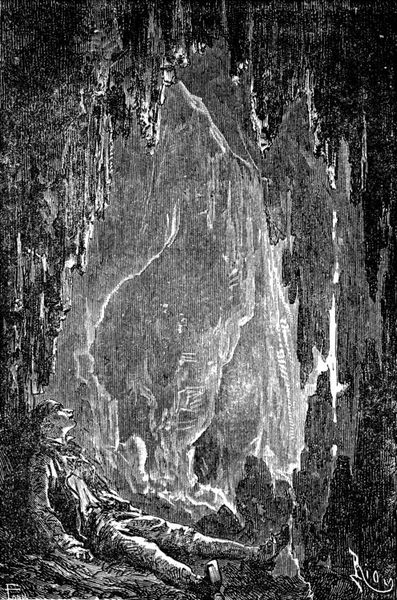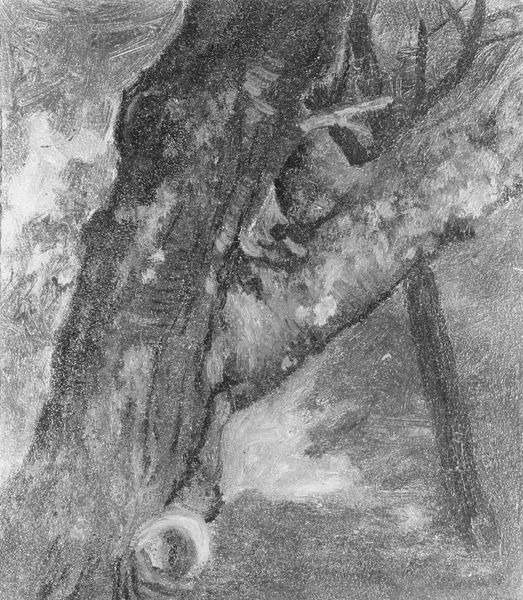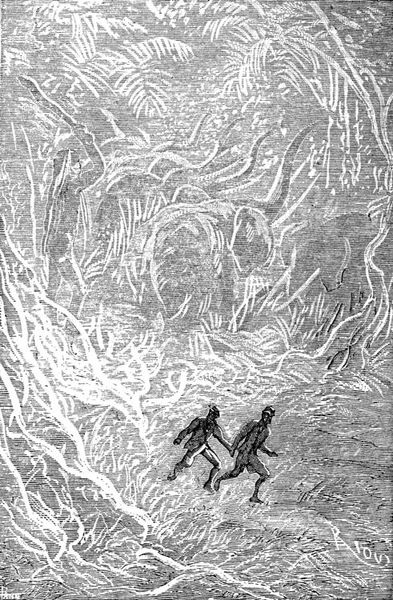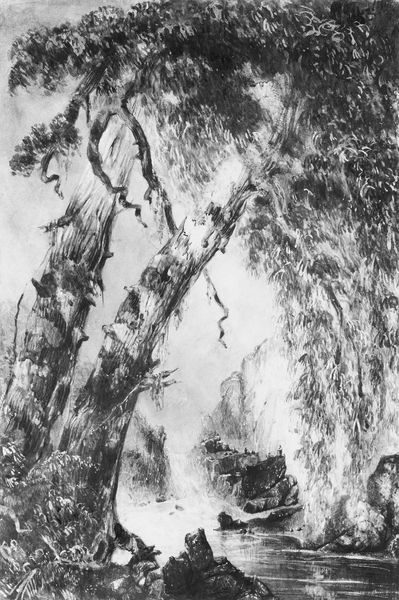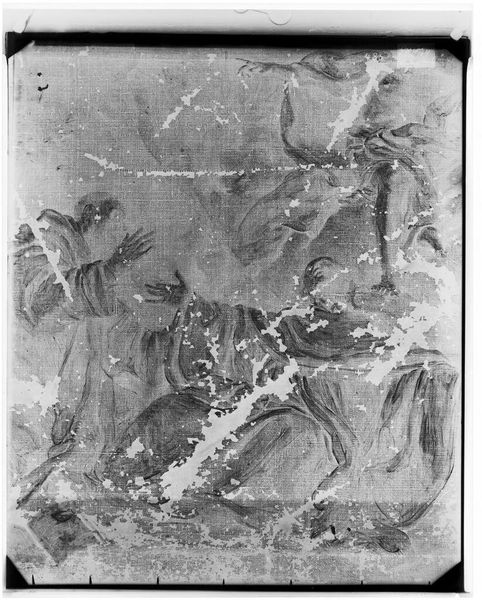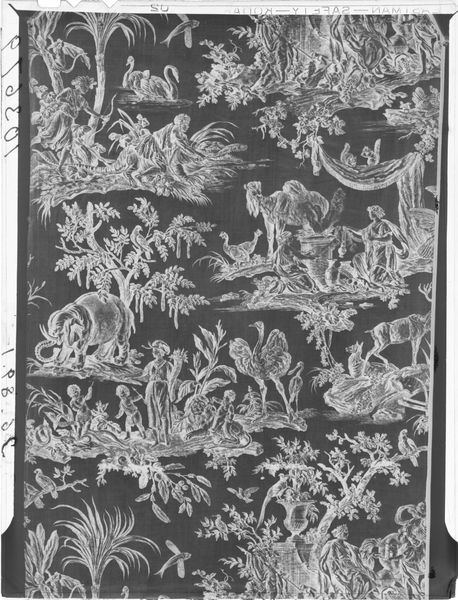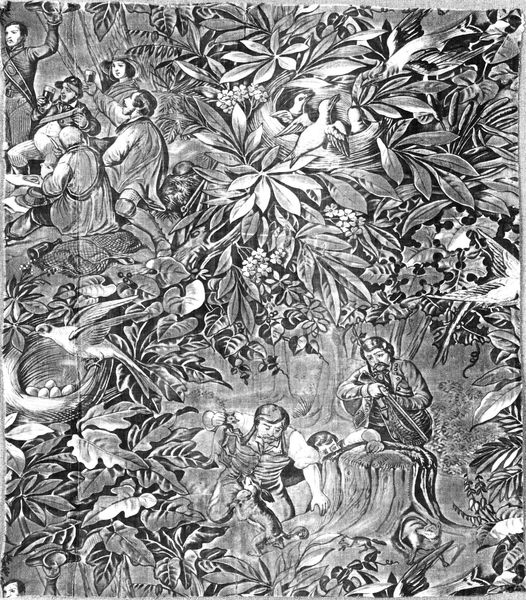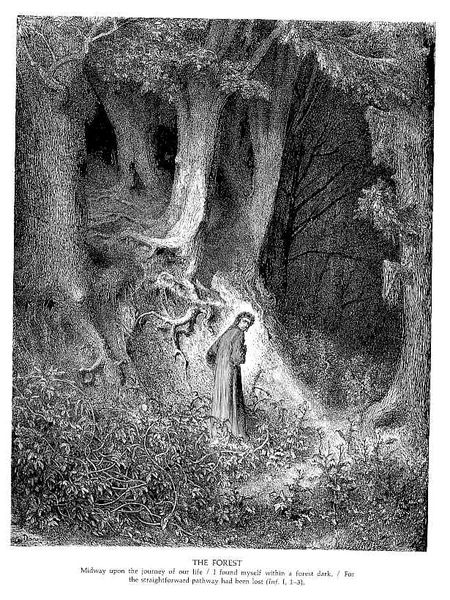
Copyright: Public domain
Editor: Here we have Édouard Riou’s 1864 engraving, "Journey to the Center of the Earth." It's incredibly detailed! All those intricate lines. It feels almost… claustrophobic. What strikes you about this piece? Curator: What grabs me is how this visual representation locks into the period’s obsession with exploration, but also anxiety about the unknown. Notice how the sharp lines and contrasting shades amplify that sense of being swallowed by the earth. Does this claustrophobia connect with contemporary concerns about the environment? Editor: Absolutely. The intensity makes me think about our limited resources and how exploration can easily turn into exploitation. It makes the figures at the bottom appear vulnerable. Curator: Exactly. These figures underscore not just the human desire for discovery, but also our fragile place within a much larger, potentially indifferent natural world. Are we imposing our will on nature, or is nature indifferent to our plight? How does that play into issues of colonialism, race, and power? Editor: So it's about seeing beyond just the adventure and questioning who gets to explore, who benefits, and what the real cost is? Curator: Precisely. This engraving becomes a point of entry for a larger discussion of those questions. It encourages us to consider whose perspectives and stories are often left out. It also raises the issues related to race, power and inequality by seeing the underlayers of art pieces. Editor: I never would have thought of all that just from looking at a drawing of a jungle scene. That is definitely eye-opening! Curator: Right? Art helps us ask harder questions of ourselves. The drawing of jungle looks a lot more different after this conversation.
Comments
No comments
Be the first to comment and join the conversation on the ultimate creative platform.

